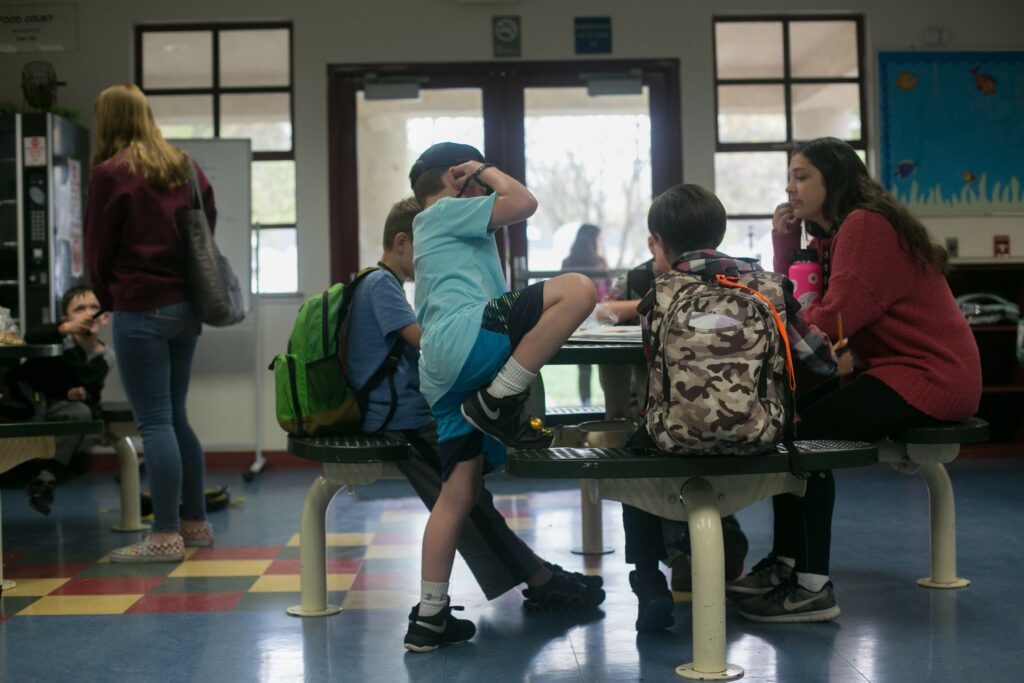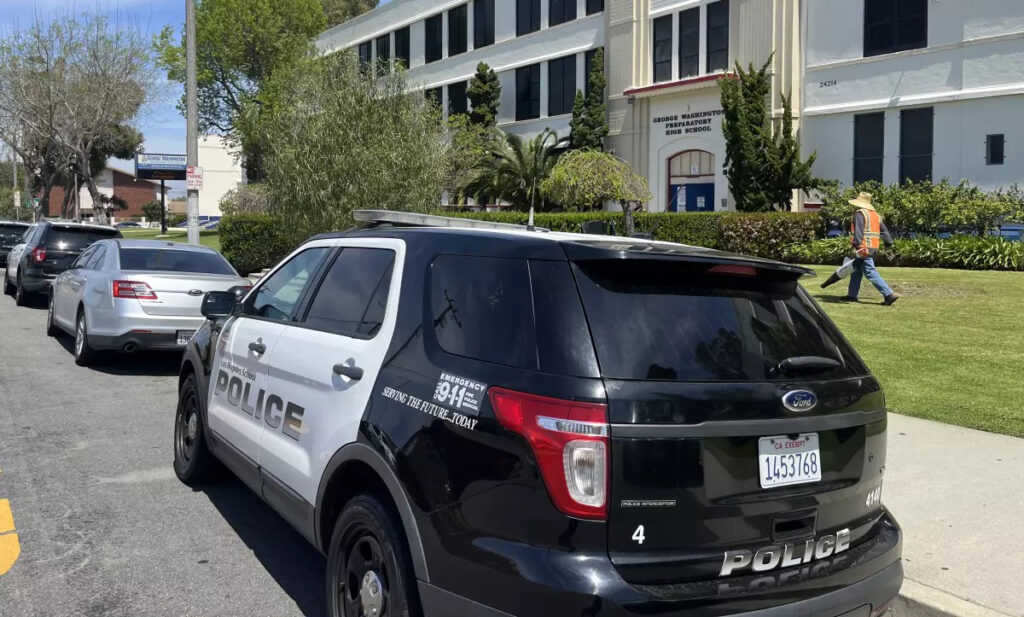
Credit: Photo: Julie Leopo/EdSource
To create an education system that has stable funds for mental health, California educators and leaders are turning to the health system and launching a statewide behavioral health initiative to fill funding gaps in fluctuating, sometimes unpredictable school budgets.
“The health systems and the education systems are not bound together successfully enough to make sure we engage in both prevention and treatment,” said David Gordon, a commissioner at the Mental Health Services Oversight and Accountability Commission. “That’s particularly true for the most underserved communities.”
Funding for mental health in California public schools typically has come from general education budgets, a reason funds have never been stable. As the need for more mental health services and specialists skyrockets, administrators and experts are turning to the health system to better serve needs that existing education budgets just can’t cover.
Schools bridge some gaps by placing nurses, social workers, school counselors and psychologists on campuses, but there’s never enough money to fully meet student mental health needs. Without a built-in, statewide system to fund mental health in schools, districts are left to figure it out themselves.
“We’re so used to trying to provide external funding to fund us to some sort of equitable level for every student,” said Loretta Whitson, executive director of the California Association of School Counselors. “It’s never been the general fund will cover us — it’s just sort of baked into the cake.”
It’s been that way since at least the late 1980s, when Whitson began her education career, she said.
The Local Control Funding Formula, legislation that changed the way education was funded in California, created more funds for mental health and “a more holistic view and review of schools,” Whitson said. “But if there’s not enough money to go around, then school district administrators need to make very hard decisions.”
If districts have to rely on general fund money for mental health providers, it creates competition with funding for teachers and education programs, Whitson said. If budgets had more funds specifically for mental health, it would mean more money for education.
If we piecemeal it like it’s been, then we’re always trying to find money through categorical programs or grant funding.
Loretta Whitson, executive director of the California Association of School Counselors
California doesn’t mandate districts to provide school counselors, social workers, nurses or psychologists, but it is encouraged. Some experts say mandates could ensure there would be mental health specialists at every school. But that goes against the idea of local control, Whitson said, which allows districts to make decisions based on their community’s needs and resources.
Grants for mental health have helped, but it’s not sustainable, Gordon said. School districts will receive grants for a few years or even less, and when those dollars run out, the services or mental health specialists do too if districts don’t have money to keep them going.
Similarly, districts turned to pandemic relief dollars to boost staffing for school counselors, social workers, psychologists and nurses, but those funds expired in September.
Nonprofits and community organizations have stepped in to help fill needs at lower costs, put therapists on school campuses, and taken over doing burdensome paperwork. But if the services aren’t free to school districts, then most money for mental health has to come out of the education budget.
Blending two systems
Gordon credits Gov. Gavin Newsom’s Children Youth and Behavioral Health Initiative for beginning to merge the health and education system. The goal for two major systems to come together is reachable, Gordon said, “but it will take a lot of coordination and collaboration.”
A key component of the behavioral health initiative is to support partnerships between Medi-Cal managed care plans and schools to increase access for children receiving Medi-Cal — nearly 5.7 million kids in 2022. Another goal is to increase access to early interventions and preventative mental and behavioral health care.
The behavioral health initiative was part of the Budget Act of 2021 and the governor’s Master Plan for Kids’ Mental Health. The California Department of Health Care Services will invest $4.7 billion over multiple years in youth behavioral services.
According to the master plan, more than 240,000 children cope with depression, and 66% don’t receive treatment. Suicide rates among 10-18-year-olds increased by 20% in 2019-2020.
Efforts to implement the behavioral health initiative started in January 2022. So far, hundreds of millions of dollars in funding have been disbursed to dozens of organizations for training and retention of providers, loan repayments and scholarships to increase providers in underserved areas.
But some of the funding is distributed as grants and won’t last long, Whitson said.
“I think it’s important to consider: How do we sustain this? A lot of programs come in as temporary programs, so seed money,” Whitson said. “We look at sustainable money as Medi-Cal a lot of times.”
The amount of money school districts can bill to Medi-Cal recently increased, thanks to new legislation. The California Education Code was updated in January after AB-2058 passed, allowing districts to bill Medi-Cal for mental health services provided by school counselors.
A 2018 statewide count of school counselors tallied about 11,000, Whitson said. She estimates there are about 14,000 now.
“School counselors are one of the biggest billing forces in the state. It should be bringing in quite a bit of money,” Whitson said. “It could be used to lower the caseloads on all levels — social workers, psychologists, school counselors.”
However, the process for school districts to bill Medi-Cal can be long and cumbersome.
Sometimes districts won’t get a full refund, and it could take a few years before the money is returned, said Marlon Morgan, founder and CEO of Wellness Together, a nonprofit that brings mental health providers to school campuses in California and New York.
“Schools are pretty reticent to use that billing option because they could end up spending $1 million but only get $500,000 back,” Morgan said. “If you’re on a school board and looking at ways to stabilize your budget and to know what to expect, that’s a huge wild card, and frankly one that doesn’t get used very often.”
In Sacramento County, schools are partnering with the Sacramento County Health Department to have one mental health provider at every school, said Gordon, who is also the superintendent of the Sacramento County Office of Education. The partnership works well because the county health departments already manage Medi-Cal and Medicaid plans — which insure more than 60% of people in the county, he added.
The purpose isn’t only to provide direct services at schools, but to have someone from the health system stationed at schools interacting with staff, students, and families every day, Gordon said. The goal is to have “centers of wellness and prevention, rather than a center of let’s go out and seek treatment for a problem that should’ve been caught many years ago,” he said.
Some organizations are combining billing insurance and grant funding to bring providers to schools. Campus Clinic, which aims to remove barriers to health care access by putting providers at schools, has brought mental health providers and other physicians to 14 districts and more than 600 schools in California, said Thomas Shaffer, the organization’s founder and president.
Most districts haven’t had to foot the bill. Campus Clinic started paying for all the costs, Shaffer said, and was able to sustain its offerings through billing insurance, including Medi-Cal, and applying for grants. One burden Campus Clinic and other similar organizations lift from districts is handling the paperwork and billing.
“We aim to complete, not compete, with existing resources,” Shaffer said.
Still, the need for mental health services and providers is too great to catch up with demand. Campus Clinic is contracted with 28 more districts that are still in the planning stages, Shaffer said.
Campus Clinic also offers universal health screenings that allow schools to quickly identify which students are showing signs of anxiety, depression and risk of self-harm, Shaffer said. Schools can see responses through a dashboard that includes real-time notifications for students who are at risk of self-harm. Campus Clinic has teams that start reaching out to families to offer services.
But it doesn’t come without challenges. Building trusting relationships with families so they feel comfortable accepting services can be an uphill battle.
‘The cultural and trust piece’
Officials at Feaster Charter School in Chula Vista saw immediate results after Campus Clinic gave universal mental health screenings to students in grades six through eight in May.
Out of the 350 students, roughly 40% were identified as having some level of anxiety and depression, said Karen Haro-Esparza, community school coordinator.
Teams at Campus Clinic started contacting families right away, Haro-Esparza said. Although it’s a huge help, it also created challenges — “the cultural and trust piece.”
“Because they are not a regular part of our staff, when Campus Clinic communicates with families, they have a lot of questions,” Haro-Esparza said. “Our challenge has been, ‘How do we educate families further to destigmatize and normalize the partnerships?’”
The stigma around mental health — especially among people of color and different cultures — is one reason families or guardians don’t seek or access resources for students. Something most mental health experts working in education can agree on is the importance of maintaining trust among schools, providers and families.
“It’s not just putting money out to buy services. It’s working to try to put the systems together so that they’re relating and families will come to know and trust the medical system even though they aren’t located in their community.”
David Gordon
Campus Clinic providers aim to become part of the school community, Shaffer said. One strategy Campus Clinic providers use is to rotate through different classrooms to speak with students about health and wellness for 15 minutes to become more familiar and create connections.
Wellness Together is investing in interns to diversify the workforce and build trusting relationships between communities and mental health providers, Morgan said. Before mental health professionals receive their licenses, they need to complete hundreds of hours that typically are unpaid — some programs won’t even allow future providers to have paid internships.
Morgan, who started his career as a school counselor, said he’s seen dozens of people never get their licenses because they can’t afford to work for free. It contributes to the lack of diversity in the behavioral health workforce, he said. Now, the nonprofit has more than 30 partnerships with universities in California to ensure interns are paid liveable wages and receive benefits.
Wellness Together pays interns working toward their licenses to be social workers, clinical and mental health counselors, licensed marriage and family therapists, and a pupil personnel services credential.
“The biggest challenge is finding staff and making sure the staff reflects the communities they’re serving,” Morgan said. “By paying interns and paying associates, we now have an option and an opportunity to really hire the best person for the job and often hire a person who is local and from the community.”







